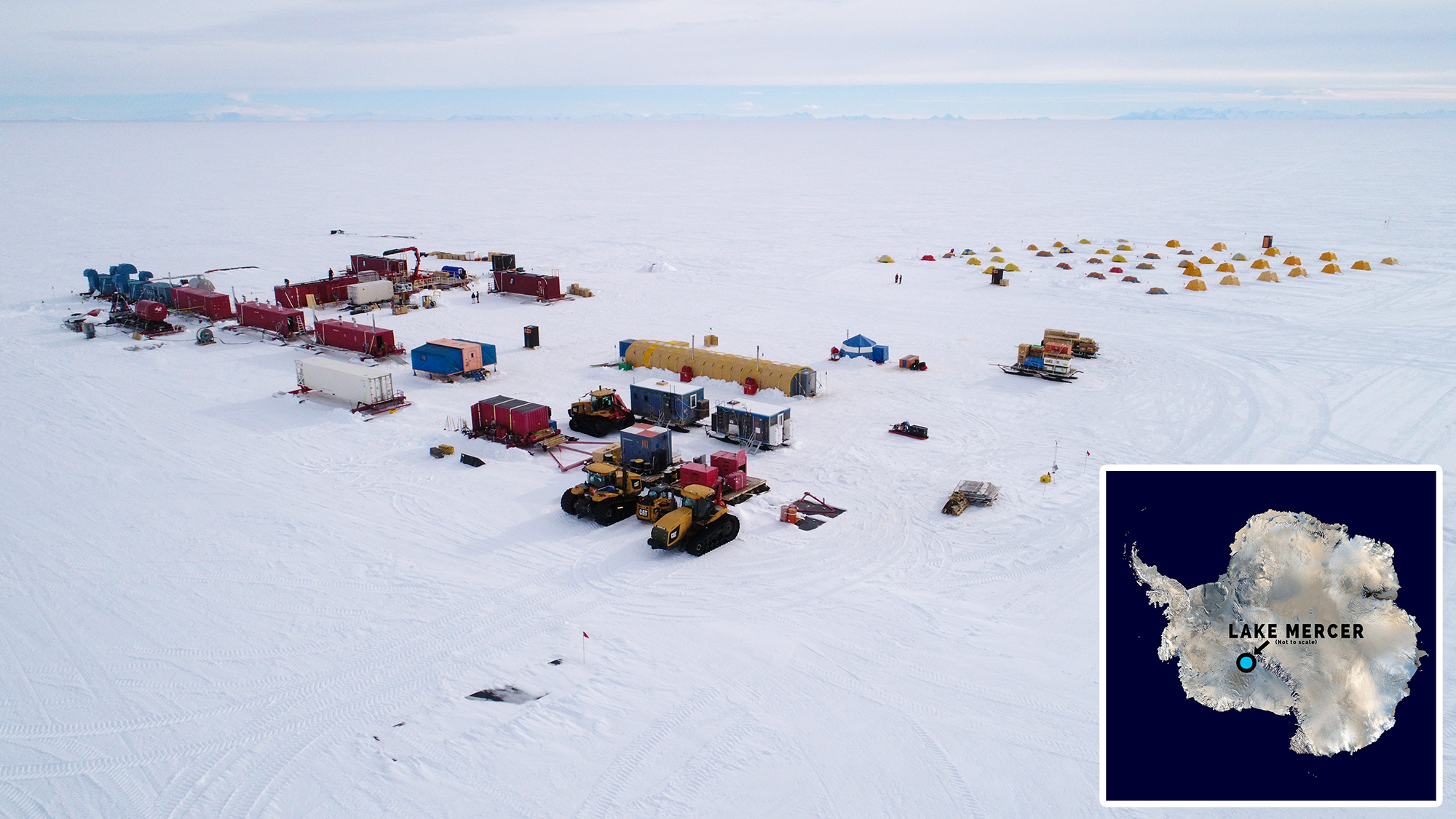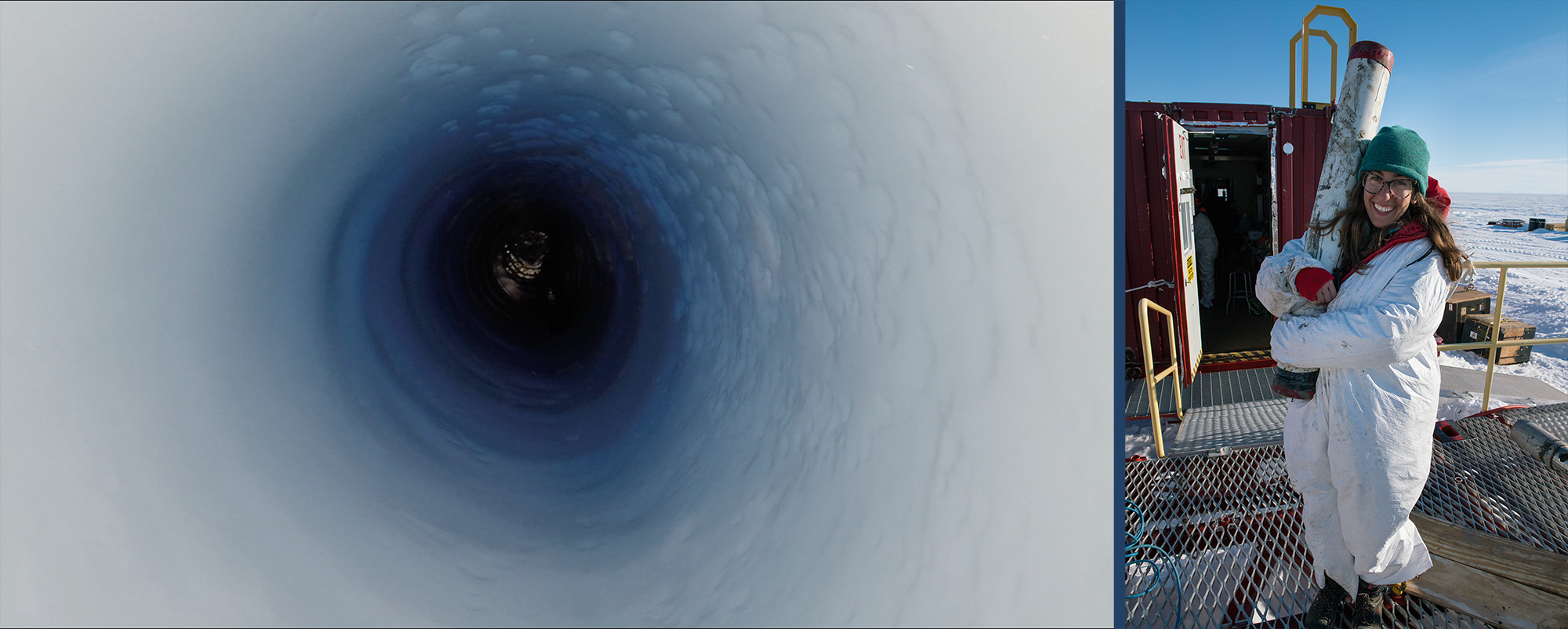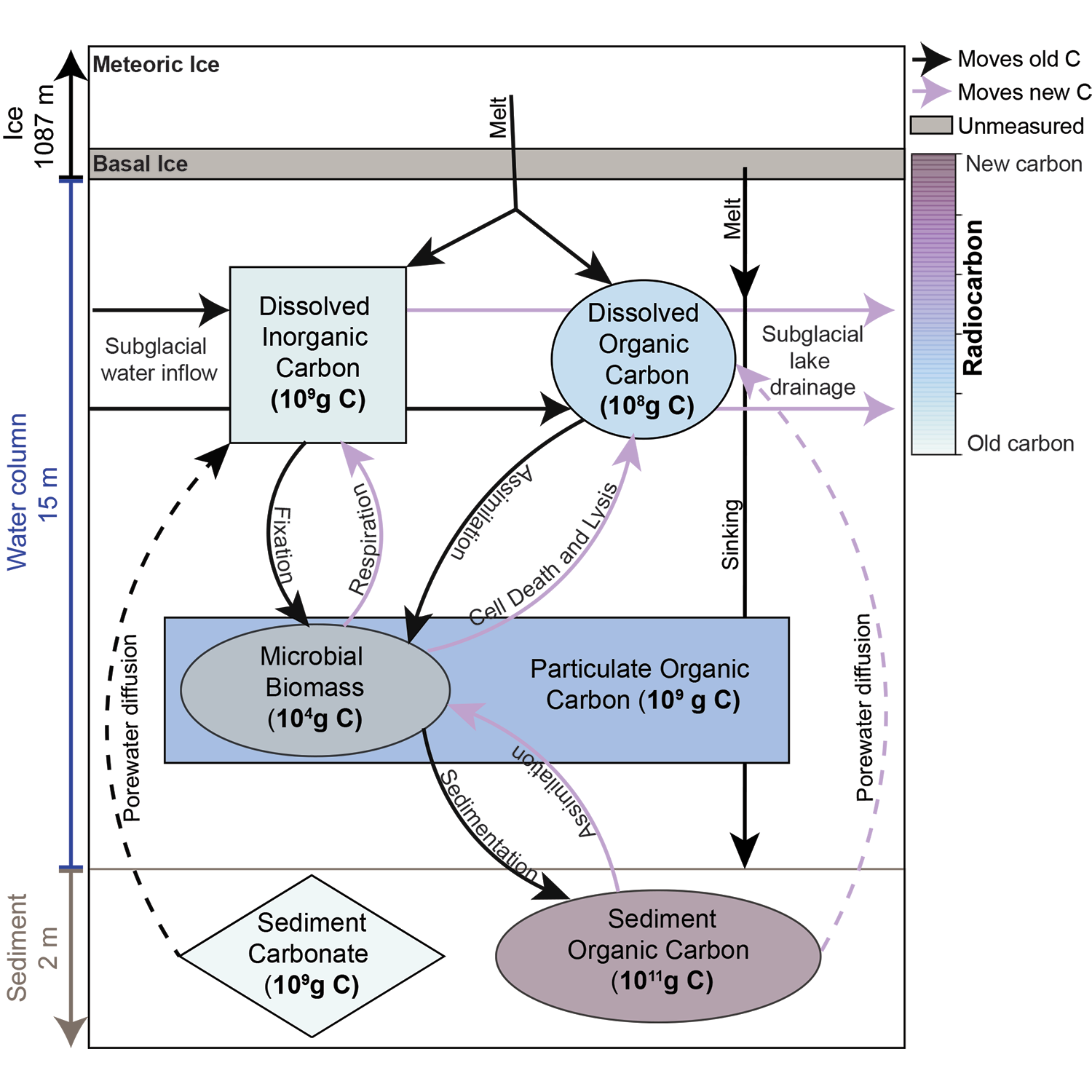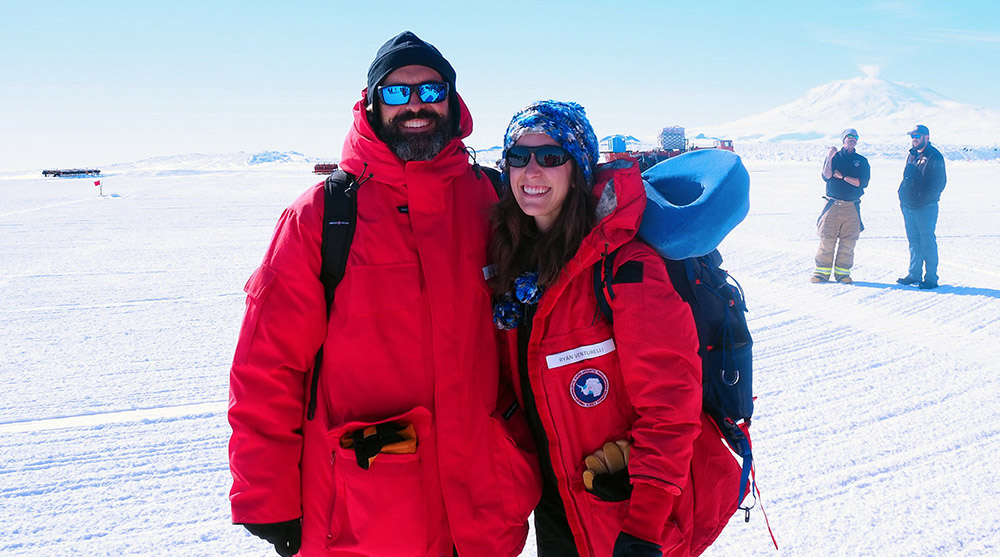Written by Kristen Kusek, Former Communications Director for USF CMS
Subglacial lakes that never see the light of day are among the least accessible frontiers of science, brimming with more tales yet untold than even the planets of our solar system. One thing seems certain: where there is water, there is life -- even if said water is at the bottom of a frigid lake, in pitch darkness, below more than a half mile of the West Antarctic Ice Sheet.
As reported in AGU Advances, scientists analyzed the chemical fingerprint of the ocean and microbes retrieved from sediments and water at the bottom of a subglacial lake called Mercer Lake to describe, for the first time, where the feisty microbes get carbon, the energy source du jour, and move it through this fiercely desolate system. They used the data from the sediment, microbes, and the carbon cycle to infer the geologic history of this region, and the results surprised them.
While they previously thought that the ice over Mercer Lake had been stable for up to hundreds of millennia, this new work confirms the lake was connected to the ocean about 6,000 years ago, and the West Antarctic Ice Sheet was smaller than it is today. This was a period when climate was stable relative to the end of the last ice age and even to today’s anthropogenic climate change.

INNER IMAGE: Mercer Lake is a few hundred miles from the South Pole. OUTER IMAGE: Drone view of the historic expedition from Dec 2018 – Jan 2019 when researchers accessed a subglacial lake for only the second time in history and retrieved the longest sediment core from a subglacial lake. Credit: Billy Collins.
“This is the first time we have unequivocal geologic proof that the grounding line of the West Antarctic Ice Sheet, which is like its shoreline where the ice meets the ocean, was at least 250 kilometers further inland than it is today – possibly more,” said Ryan Venturelli, lead author of the study and assistant professor at the Colorado School of Mines. Venturelli performed the work with her former PhD advisor, marine geologist Brad Rosenheim at the USF College of Marine Science.
In other words, just a few thousand years ago the West Antarctic Ice Sheet retreated about 155 miles – a few dozen miles shy of the distance from New York to Boston – before re-growing to its modern configuration.
“These are real numbers from water and sediment samples that can now be used to validate ice sheet models,” said Venturelli.
Venturelli and Rosenheim retrieved the samples from Mercer Lake, a few hundred miles from the South Pole, as part of a 25-member team on the historic, NSF-funded expedition called Subglacial Antarctic Lake Scientific Access, or SALSA. They were on site from December 2018 to January 2019. The team used a clean-access, custom hot water drill to retrieve the longest core to date from a subglacial lake – about seven feet long. They drilled through more than a half mile of ice to get it, working against the clock while the water-filled hole refroze.
It was only the second time in history that scientists have retrieved a sediment core from a subglacial lake. (The first was retrieved from Lake Whillans in 2013.)
“This work is a big step forward for us,” said Rosenheim. “We’d thought the glacier retreated back to where it is now but it went back well beyond that, which indicates the ice is a lot more dynamic than we realized. Now we need to incorporate this new understanding into models so we can better predict what may happen in the future as the planet warms.”
The team used tools of geochemistry, including analyses of isotopes and radiocarbon dating to figure out how carbon cycles through the system. They combined that with known estimates of microbial metabolism to mathematically confirm when the grounding line of the West Antarctic Ice Sheet retreated.
“Prior to this study we had not yet confirmed the maximum extent of the last deglaciation,” said Venturelli.
6000-year-old carbon tastes just fine
“It turns out the bacteria living in this environment are hardy little guys that make do with what they have down there,” said Venturelli. “This project truly confirms that where there is water, life can persist.”
The microbes in the lake are feeding off 6000-year-old carbon introduced when this region was still connected to the ocean.

LEFT: Peering into the borehole of the operation to retrieve sediment and water samples from Mercer Lake. Credit: Kathy Kasic. RIGHT: Ryan Venturelli with the longest sediment core retrieved from a Subglacial Lake. Credit: Billy Collins
As a reminder, there is no sun powering life down there via photosynthesis, as it does in most lakes on Earth. “This is not a lake like we know it,” said study co-author and microbe expert Brent Christner from the University of Florida. “In Mercer Lake, in addition to that legacy carbon from 6000 years ago, the microbes can use chemical energy from physical processes associated with the ice sheet itself,” said Christner.
As the ice moves, the rock beneath it is pulverized into small particles that are mobilized in the water and the microbes – mostly bacteria and Archaea -- access those minerals for energy during a process called chemosynthesis. Archaea are microorganisms distinct from bacteria that have been found in other extreme environments, such as hot springs on land and hydrothermal vents in the deep sea.
The pool of carbon in the sediment at the bottom of Mercer Lake is at least 100 times bigger than any other carbon pool in the cycle – and the microbes use it efficiently, Venturelli said. They also use carbon that is introduced to the system from water bodies upstream. Subglacial lakes can be ephemeral and are more like a braided subglacial river system than a sealed-off lake system.
“Think of these lakes not as separate ecosystems but as a network of communities that are connected by the transport of water and sediment,” said Christner.
Painting the bigger picture
The fate of the Antarctic ice sheet holds extraordinary implications for sea level rise around the globe. If the entire West Antarctic Ice Sheet were to melt, some estimates suggest it would add more than nine feet to coastlines around the globe.

As part of the AGU Advances study, Venturelli, Rosenheim, and the interdisciplinary SALSA team defined the subglacial carbon cycle. They discovered that subglacial sediments provide energy for the deep, dark, and isolated subglacial microbial community.
“There is a lot of hopeless doom and gloom out there in climate science,” said Venturelli. “I find hope in the fact that this work highlights that the ice sheets are much more dynamic than we previously appreciated, and we need to probe this idea of reversibility – what were the forcing mechanisms that caused the ice sheet to re-advance to where it is today? -- so we can better predict future scenarios.”
Scientists estimate that there may be more than 650 subglacial lakes in Antarctica – so they have, between this core study and the first in 2013, literally just begun to scratch the surface of their mysteries with two main data points. But one thing is for sure, says Venturelli: Looking at the base of the glacier, particularly the water and sediment in these subglacial lake systems, is worth the extra effort.
“We couldn’t have learned these things by poking at marine sediments from the outside from a ship,” she said. “Sometimes it takes looking at an old problem in a new way to really unearth exciting findings.”
This work was funded by the National Science Foundation (NSF).
###
For more information about the SALSA expedition, watch “The Lake at the Bottom of the World.”
